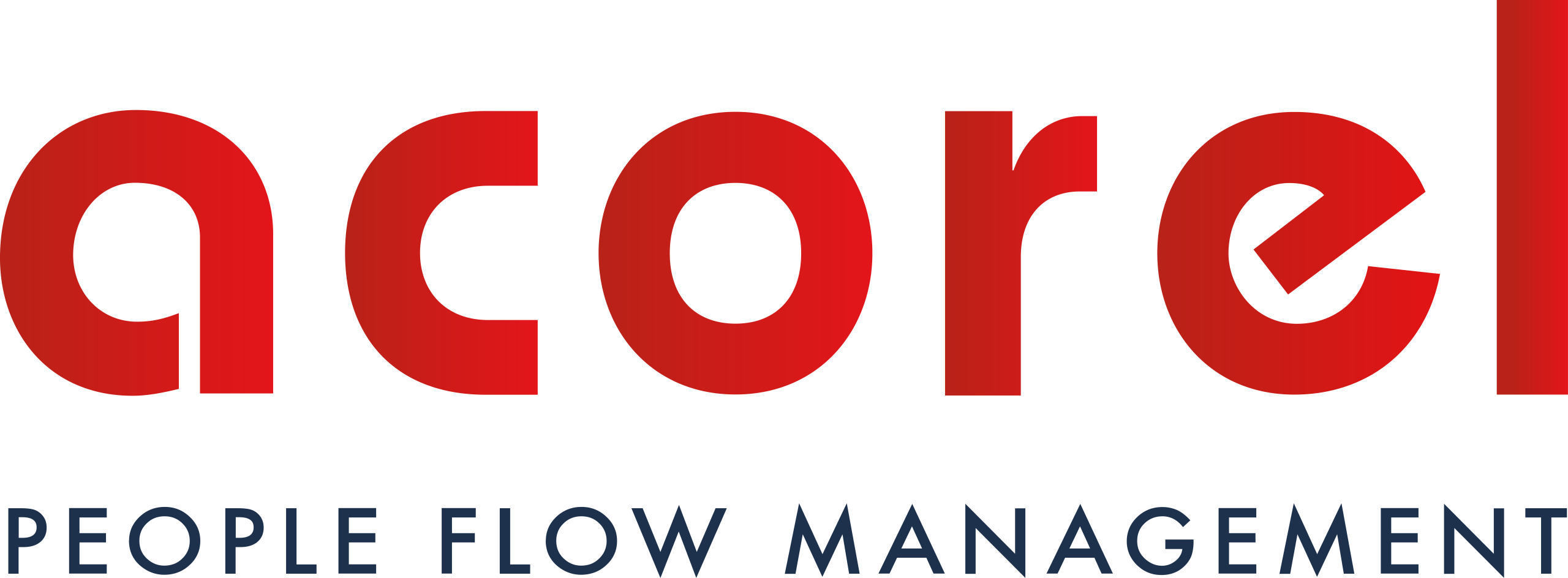During peak travel periods like school holidays or summer breaks airports face overwhelming surges in passenger traffic. Long queues, overwhelmed restrooms, and overworked staff become the norm. So how can operators stay ahead of the chaos? The answer lies in leveraging real-time occupancy data.
At Acorel, we believe that every square meter can be optimized, every second of waiting reduced, and every passenger journey improved. With our advanced passenger counting solutions, airports are entering a new era of performance driven by data-informed decisions.
Why occupancy data matters in airport environments
Occupancy data refers to all the information needed to monitor, in real time, the presence, density, and movement of passengers across airport facilities. Missing comma after “boarding gates” this causes a run-on sentence. a detailed, real-world view of how the airport operates.
Occupancy management enables airport operators to:
- Identify congestion early and redirect passenger flow
- Deploy staff to high-traffic areas as needed
- Schedule restroom cleaning based on actual usage
- Reduce wait times with smart queue management
- Improve comfort and passenger satisfaction

By transforming manual or reactive operations into data-driven strategies, occupancy analytics allow for dynamic, precise resource management.
Do you want to optimise your airports? Contact us today to find out more about our tailor-made solutions.
A growing trend backed by research
Recent research by JLL shows that using real-time occupancy data can significantly reduce real estate costs and boost operational efficiency, with insights that apply directly to airport infrastructure. With tools like Vision Air, airport managers gain access to actionable data that improve both passenger comfort and staff performance, ultimately enhancing service quality.
Proven technologies for airport occupancy monitoring
Acorel’s end-to-end solution integrates advanced hardware and software:
- 3D stereoscopic cameras deliver highly accurate, real-time passenger counts.
- Sensors are installed in key zones such as security, customs, and baggage claim.
- Vision Air, a customizable dashboard, offers real-time occupancy visualization by zone, critical threshold alerts, automated reporting, and exportable analytics. Learn more about for Vision Air.
This comprehensive occupancy monitoring system empowers operators to respond quickly to saturation, optimize daily terminal operations, and make informed decisions about long-term infrastructure planning.
Passenger flow management: anticipation is key
Thanks to real-time detection, high-density zones can be instantly identified by Acorel’s sensor network. For instance, the Stop & Go system uses visual signals and digital displays to direct passengers to available lanes, improving access to check-in counters and security points.. The dual goal is to reduce passenger stress and enhance operational efficiency. This is where occupancy data analysis becomes crucial; by knowing the load in each space, airports can intelligently redistribute flows and prevent bottlenecks.
Queue management systems: reducing wait times without adding staff

Our queue management system leverages occupancy data to dynamically organize passenger lines:
- Accurately count waiting passengers in each area
- Provide real-time wait estimates and forecasts
- Reallocate queues efficiently using tailored dashboards
Used across security, border control, and boarding zones, this system achieves accuracy above 98%. During peak periods, it significantly improves passenger flow, enabling faster throughput and maintaining controlled occupancy levels.
A complete vision for the airport of the future
Integrating occupancy data into airport operations transforms how resources are managed. It enables faster responses, better forecasting, and precise coordination of staff, infrastructure, and passenger services. From live monitoring to continuous optimization of passenger flow, every data point becomes a performance lever.
Want to see how it works? Request a live demo here
In an era where airports must balance efficiency, comfort, and scalability, occupancy management stands out as a strategic advantage. By combining passenger flow management, queue management systems, and restroom traffic insights, real-time occupancy data offers a holistic view of operations. This enables smarter resource allocation, better anticipation of traffic peaks, and a significantly improved travel experience.
